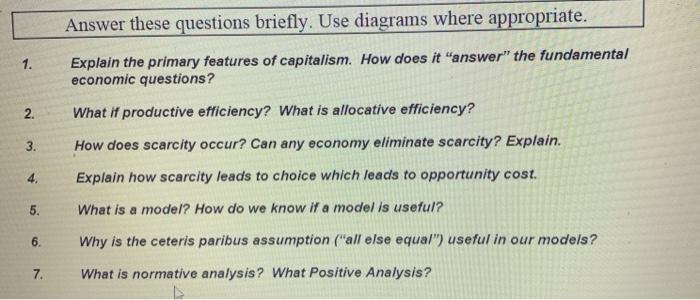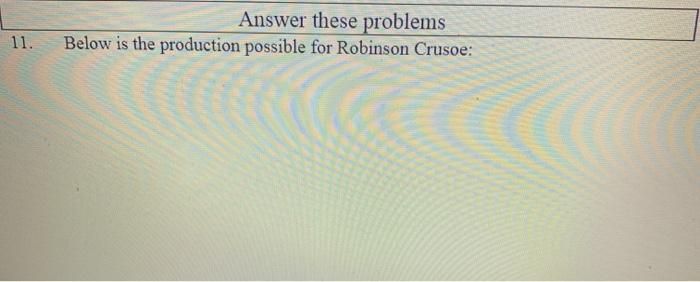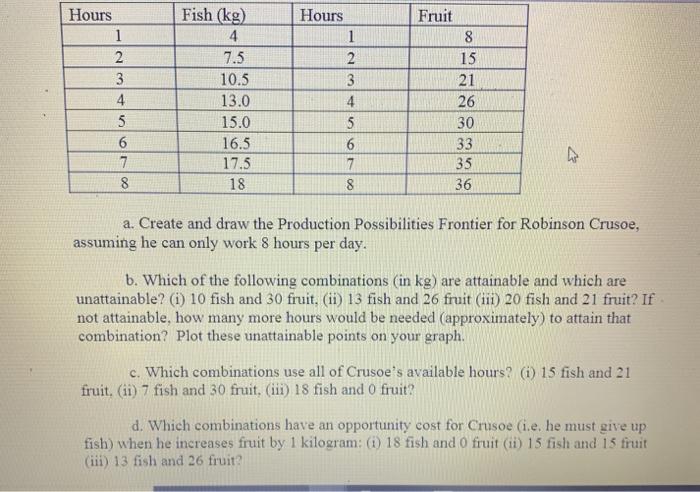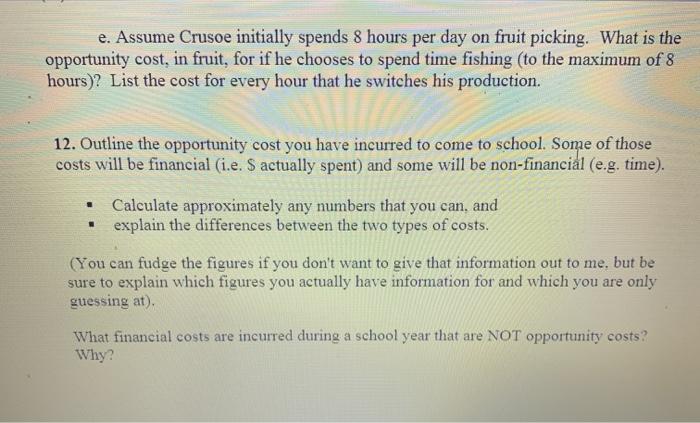Answered step by step
Verified Expert Solution
Question
1 Approved Answer
1. 2. 3. 4. 5. 6. 7. Answer these questions briefly. Use diagrams where appropriate. Explain the primary features of capitalism. How does it





1. 2. 3. 4. 5. 6. 7. Answer these questions briefly. Use diagrams where appropriate. Explain the primary features of capitalism. How does it "answer" the fundamental economic questions? What if productive efficiency? What is allocative efficiency? How does scarcity occur? Can any economy eliminate scarcity? Explain. Explain how scarcity leads to choice which leads to opportunity cost. What is a model? How do we know if a model is useful? Why is the ceteris paribus assumption ("all else equal") useful in our models? What is normative analysis? What Positive Analysis? Chapter 2 questions (based on the book up to Section 2.2) What is the interpretation of a bowed-out (concave to the origin) production possibilities curve? What is the interpretation of a straight line production possibilities curve? How does the negative slope of the production possibilities curve relate to opportunity cost? 8. 9. 10. 11. How is growth illustrated on your production possibilities curve? What causes this growth? 11. Answer these problems Below is the production possible for Robinson Crusoe: Hours 1 2 3 4 5 6 7 8 Fish (kg) 4 7.5 10.5 13.0 15.0 16.5 17.5 18 Hours 1 2 3 4 5 6 7 8 Fruit 8 15 21 26 30 33 35 36 a. Create and draw the Production Possibilities Frontier for Robinson Crusoe, assuming he can only work 8 hours per day. b. Which of the following combinations (in kg) are attainable and which are unattainable? (i) 10 fish and 30 fruit, (ii) 13 fish and 26 fruit (iii) 20 fish and 21 fruit? If not attainable, how many more hours would be needed (approximately) to attain that combination? Plot these unattainable points on your graph. c. Which combinations use all of Crusoe's available hours? (i) 15 fish and 21 fruit, (ii) 7 fish and 30 fruit, (iii) 18 fish and 0 fruit? d. Which combinations have an opportunity cost for Crusoe (i.e. he must give up fish) when he increases fruit by 1 kilogram: (i) 18 fish and 0 fruit (ii) 15 fish and 15 fruit (iii) 13 fish and 26 fruit? e. Assume Crusoe initially spends 8 hours per day on fruit picking. What is the opportunity cost, in fruit, for if he chooses to spend time fishing (to the maximum of 8 hours)? List the cost for every hour that he switches his production. 12. Outline the opportunity cost you have incurred to come to school. Some of those costs will be financial (i.e. S actually spent) and some will be non-financial (e.g. time). . Calculate approximately any numbers that you can, and explain the differences between the two types of costs. (You can fudge the figures if you don't want to give that information out to me, but be sure to explain which figures you actually have information for and which you are only guessing at). What financial costs are incurred during a school year that are NOT opportunity costs? Why?
Step by Step Solution
★★★★★
3.47 Rating (160 Votes )
There are 3 Steps involved in it
Step: 1
Capitalism is an economic system characterized by private ownership of resources free markets profit motive and competition It answers the fundamental economic questions through market forces of suppl...
Get Instant Access to Expert-Tailored Solutions
See step-by-step solutions with expert insights and AI powered tools for academic success
Step: 2

Step: 3

Ace Your Homework with AI
Get the answers you need in no time with our AI-driven, step-by-step assistance
Get Started


